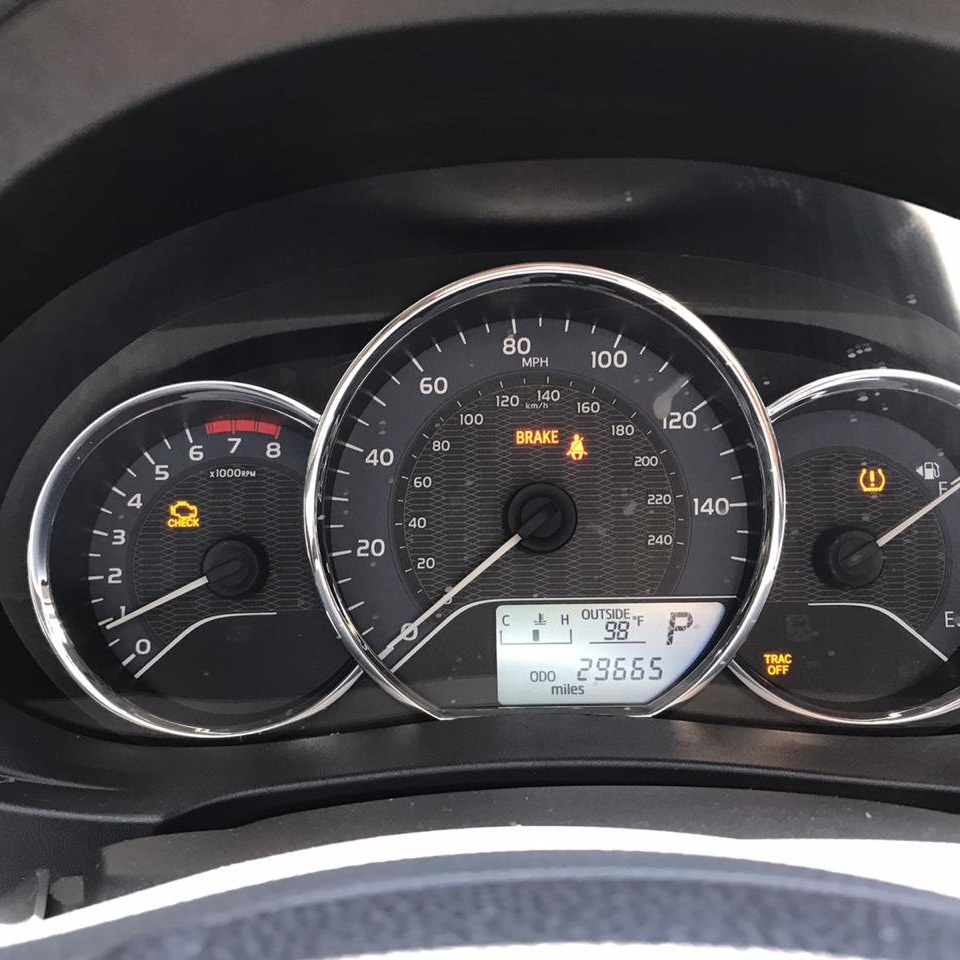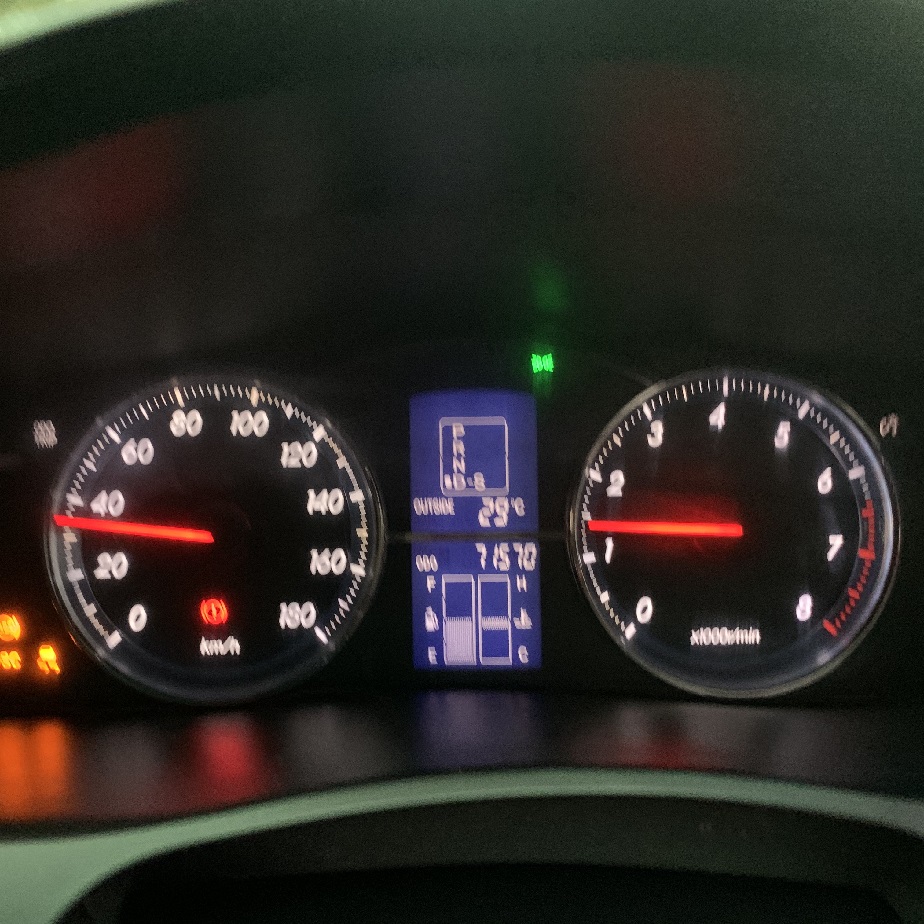Driving a modern vehicle has brought numerous advancements in safety and convenience. Among these advancements is the Vehicle Stability Control (VSC) system. The VSC light on your car’s dashboard is an important indicator. This comprehensive article explores the VSC light, its significance, functionality, and troubleshooting.

What is the VSC Light?
Introduction to Vehicle Stability Control
Vehicle Stability Control is a crucial safety feature in modern cars. It helps drivers maintain control during challenging driving conditions. It reduces the risk of accidents caused by skidding. The system minimizes instability issues that can occur when the car loses traction.
Functionality of the VSC System
The VSC system works in tandem with the Anti-lock Braking System (ABS) and Traction Control System (TCS). When the sensors detect a loss of control, the VSC intervenes. It automatically adjusts the engine power and applies brakes to individual wheels. This helps to maintain stability and steer the car back on course.
The Significance of the VSC Light
The VSC light on your dashboard is essential. It indicates the activation of the stability control system. When this light turns on during regular driving conditions, it signals that there may be an issue with the system. Understanding its significance is crucial for safe driving.
Common Conditions for VSC Light Activation
Several scenarios can activate the VSC light. For instance, driving on slippery surfaces like ice or wet roads may trigger it. When the vehicle system detects that your car is about to skid, it intervenes, and the light comes on. Additionally, mechanical issues or sensor malfunctions can activate the light.
Historical Perspective
The development of Vehicle Stability Control systems began in the late 1980s. Automotive engineers sought to improve car safety and prevent high-speed crashes. By the mid-1990s, VSC systems were integrated into luxury vehicles. Now, they are standard in many cars worldwide.
Regulations and Standards
Government regulations and industry standards have enforced the installation of VSC in vehicles. Studies have shown these systems significantly reduce the incidence of single-car crashes, resulting in higher safety ratings for vehicles equipped with them.
Diagnosing the VSC Light
What to Do When the VSC Light Turns On
When the VSC light illuminates, the first step is not to panic. Carefully observe driving conditions and determine if it’s related to weather or road surfaces. If it remains on, it’s advisable to have your car checked by a professional.
Diagnostic Tools and Methods
Mechanics use diagnostic tools to identify VSC issues. The On-Board Diagnostics (OBD-II) tool reads fault codes from the car’s computer. These codes help pinpoint the malfunction, whether it’s a sensor issue or an internal system error.
Common Causes of VSC Light Illumination
Several factors can cause the VSC light to turn on. One common cause is sensor malfunction. Wheel speed sensors, which monitor tire rotation, can fail. Faulty steering angle sensors can also trigger the light. Electrical issues, such as faulty wiring or connectors, are another frequent cause.
Importance of Regular Maintenance
Regular vehicle maintenance can prevent VSC problems. Routine checks include examining sensor connections and ensuring they are clean and secure. Regularly updating the car’s software can also help prevent system errors.
DIY Troubleshooting
For those inclined to do-it-yourself car maintenance, simple troubleshooting steps can be taken. Checking tire pressure, ensuring all tires match in size and type, and inspecting sensors for debris can sometimes resolve the issue. However, complex problems require professional attention.
Professional Help
If the VSC light remains illuminated after basic troubleshooting, it’s essential to consult a professional technician. Certified mechanics have specialized training and equipment for accurately diagnosing and fixing VSC-related issues.
Repairing and Resetting the VSC System
Professional Diagnosis and Repair
A visit to an auto repair shop is the best course of action for persistent VSC light issues. Technicians will conduct thorough system checks and diagnostics. Repairs may involve sensor replacements or adjustments. In some cases, re-calibrating the system may be necessary.
Understanding Repair Costs
The cost of fixing VSC issues can vary. Simple sensor replacements may cost less, but more complex problems involving multiple system components can be expensive. Understanding your vehicle warranty can help mitigate some costs.
Resetting the VSC Light
In some cases, once the issue is resolved, the VSC light can be reset manually. This involves using a scan tool to clear the error codes. However, if the light persists after resetting, it indicates an unresolved issue.
Preventive Measures
Preventive measures can help maintain the VSC system. Regularly checking tire conditions, alignment, and balance, as well as adhering to routine maintenance schedules, can prevent VSC-related issues.
Scheduled Maintenance
Following the manufacturer’s recommended maintenance schedule ensures the optimal functioning of the VSC system. This includes timely computer diagnostics and software updates.
Warranty Considerations
Many newer vehicles come with warranties that cover VSC systems. Understanding these warranties can save significant money on repairs. Always check the terms and conditions regarding VSC coverage.
Impact on Driving Safety
Enhancing Safety Through Technology
The VSC system significantly enhances driving safety. In critical situations, the system’s intervention can be the difference between avoiding and getting into an accident. By automatically correcting skids and slides, it ensures better control of the vehicle.
Statistical Insights
Various studies have shown the effectiveness of VSC systems. According to the National Highway Traffic Safety Administration (NHTSA), vehicles with VSC are involved in fewer single-vehicle crashes than those without it. These statistics highlight the importance of the VSC system in modern automobiles.
Practical Driving Tips
Adhering to safety practices while driving complements the VSC system. This includes driving at safe speeds, especially in adverse conditions, and being aware of road surfaces. Combining these practices with the VSC system ensures a safer driving experience.
Limitations of the VSC System
While the VSC system is highly effective, it has limitations. It cannot overcome the physical aspects of driving, such as extreme weather conditions. Drivers must still practice safe driving habits, as VSC is not a substitute for cautious driving.
Educating New Drivers
Educating new drivers about the VSC system is vital. Understanding how the system works and its limitations can help them make better decisions on the road. Driver education programs should include modules on modern car safety systems.
Building Confidence
Knowing that the VSC system is active can build driver confidence. It offers an additional layer of safety, allowing drivers to navigate challenging conditions more effectively.
Case Studies and Real-life Incidents
Real-Life Examples
Examining real-life incidents where the VSC system made a difference can be enlightening. Instances where drivers avoided potentially fatal accidents due to the VSC system underscore its importance.
Lessons Learned
Analyzing such cases offers valuable lessons. For example, understanding common failure points in the VSC system from these incidents can help in preventive measures.
Interviews with Automotive Experts
Hearing from automotive experts provides deeper insights into the VSC system. Expert interviews can clarify common myths and offer practical advice on maintaining the system.
Understanding System Evolution
Exploring how the VSC system has evolved over the years gives a broader perspective. From its rudimentary beginnings to the sophisticated systems in modern cars, understanding this evolution underscores the importance of technology in vehicle safety.
User Testimonials
User testimonials provide firsthand accounts of how the VSC system has impacted their driving experiences. These testimonials often highlight both positive aspects and areas where users need better awareness.
Expert Recommendations
Combining expert analysis and user experiences can help formulate comprehensive recommendations. These can guide drivers on the best practices for maintaining their VSC systems and ensuring heightened safety.
Future of Vehicle Stability Control
Technological Advancements
The future of Vehicle Stability Control is promising. With the advancement of artificial intelligence and machine learning, VSC systems can become even more responsive. Future systems may include predictive capabilities, allowing them to anticipate and react to potential hazards before they occur.
Integration with Autonomous Vehicles
As we move towards autonomous driving, the integration of VSC systems becomes even more critical. Autonomous vehicles will rely on a multitude of sensors and systems working together. Enhanced VSC systems will play a vital role in maintaining stability and safety.
Environmental Considerations
Future developments in VSC systems will also consider environmental factors. Climate change is causing more unpredictable weather patterns, which can lead to slippery or unstable driving conditions. Advanced VSC systems will need to adapt to these changing environments.
Innovations in Sensor Technology
Sensor technology is continually improving. Future VSC systems will likely utilize more advanced sensors that offer faster response times and greater accuracy. This will enhance the system’s ability to maintain vehicle stability in real-time.
Collaborative Efforts
Collaboration among automotive manufacturers, technology firms, and regulatory bodies will drive the future of VSC systems. By working together, they can develop more robust systems that enhance overall vehicle safety.
Education and Awareness
Educating consumers about the importance of VSC systems will remain a priority. As technology advances, so too must the awareness and understanding of these systems. Drivers must stay informed about new features and how to use them effectively.
Conclusion
Understanding the VSC light in your car is crucial for ensuring safety on the road. From diagnosing issues to understanding its role in modern vehicles, the VSC system is a vital component. Regular maintenance and staying informed about advancements in vehicle stability control will contribute to a safer driving experience. As technology continues to evolve, the VSC system will remain a cornerstone of automotive safety, providing drivers with the confidence and tools needed to navigate the complexities of today’s driving environments.
FAQs on VSC Light
What Does the VSC Light Mean?
The VSC light indicates that your vehicle’s stability control system is active or experiencing an issue.
Can I Drive with the VSC Light On?
While you can drive with the VSC light on, it’s advisable to have your vehicle checked by a professional as it may indicate a problem with the system.
How Much Does it Cost to Fix a VSC System?
The cost of fixing a VSC system can vary widely. Simple sensor replacements may cost less, but complex issues can be more expensive.
What Triggers the VSC Light?
Various factors, including sensor malfunctions, electrical issues, or driving on slippery surfaces, can activate the VSC light.
Is VSC Standard in All Vehicles?
Most modern vehicles come equipped with VSC systems, especially since regulations have made them mandatory in newer models.
How Do I Reset the VSC Light?
Resetting the VSC light often involves using a scan tool to clear error codes. However, if the issue persists, professional attention is needed.
Understanding the VSC light and system is crucial for safe driving. By staying informed and proactive, you can ensure that your vehicle’s stability control system functions optimally, safeguarding you and your passengers on every journey.


